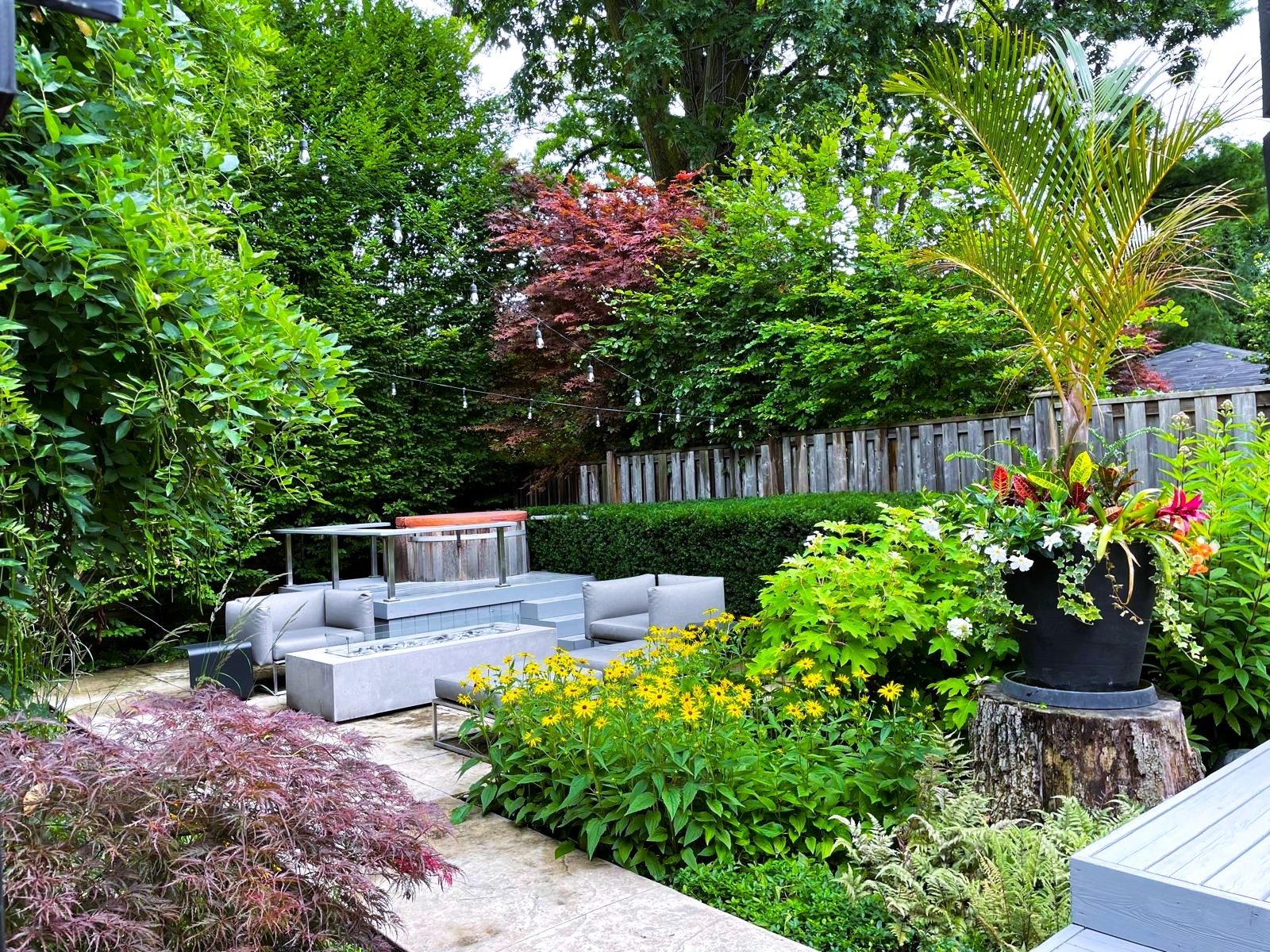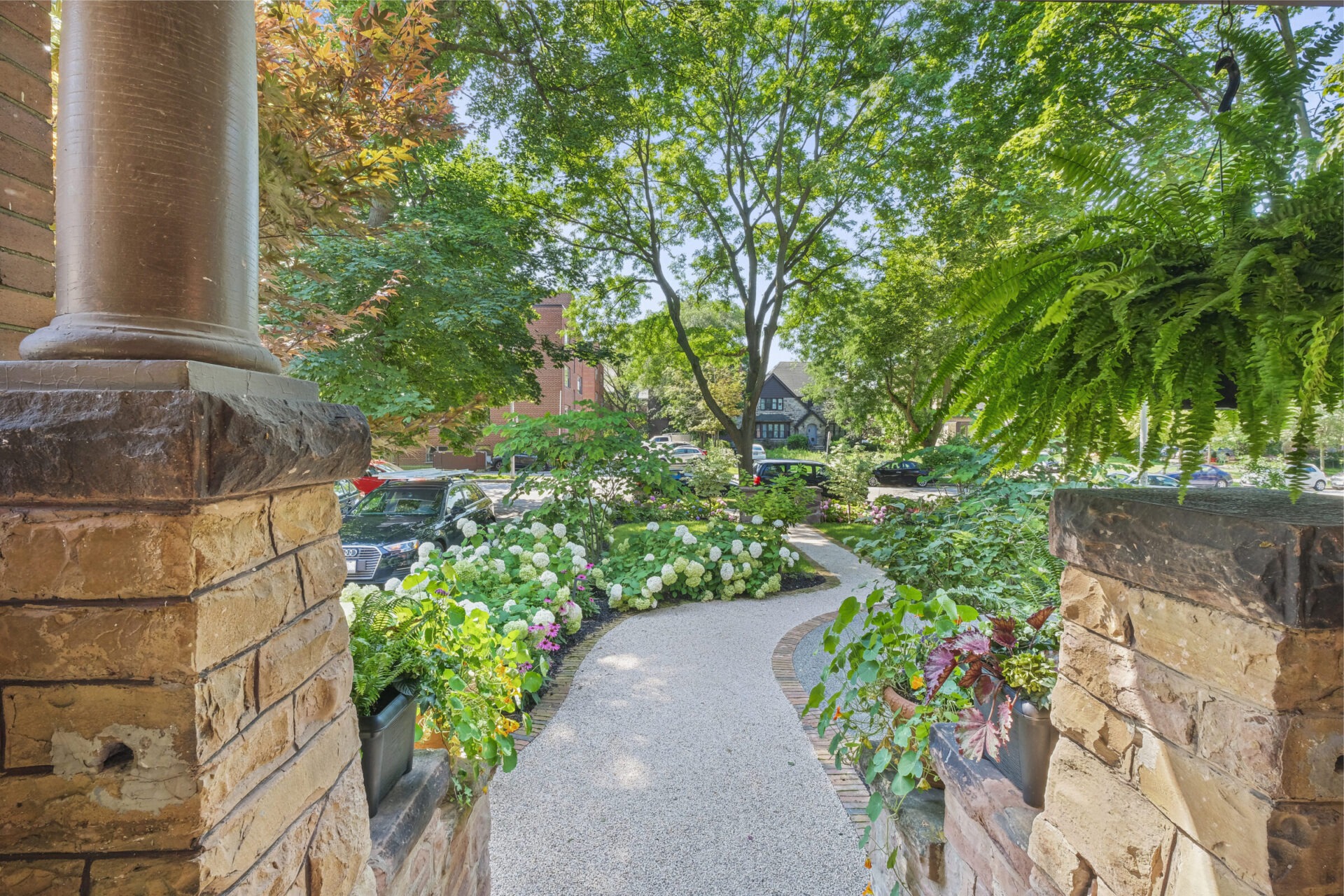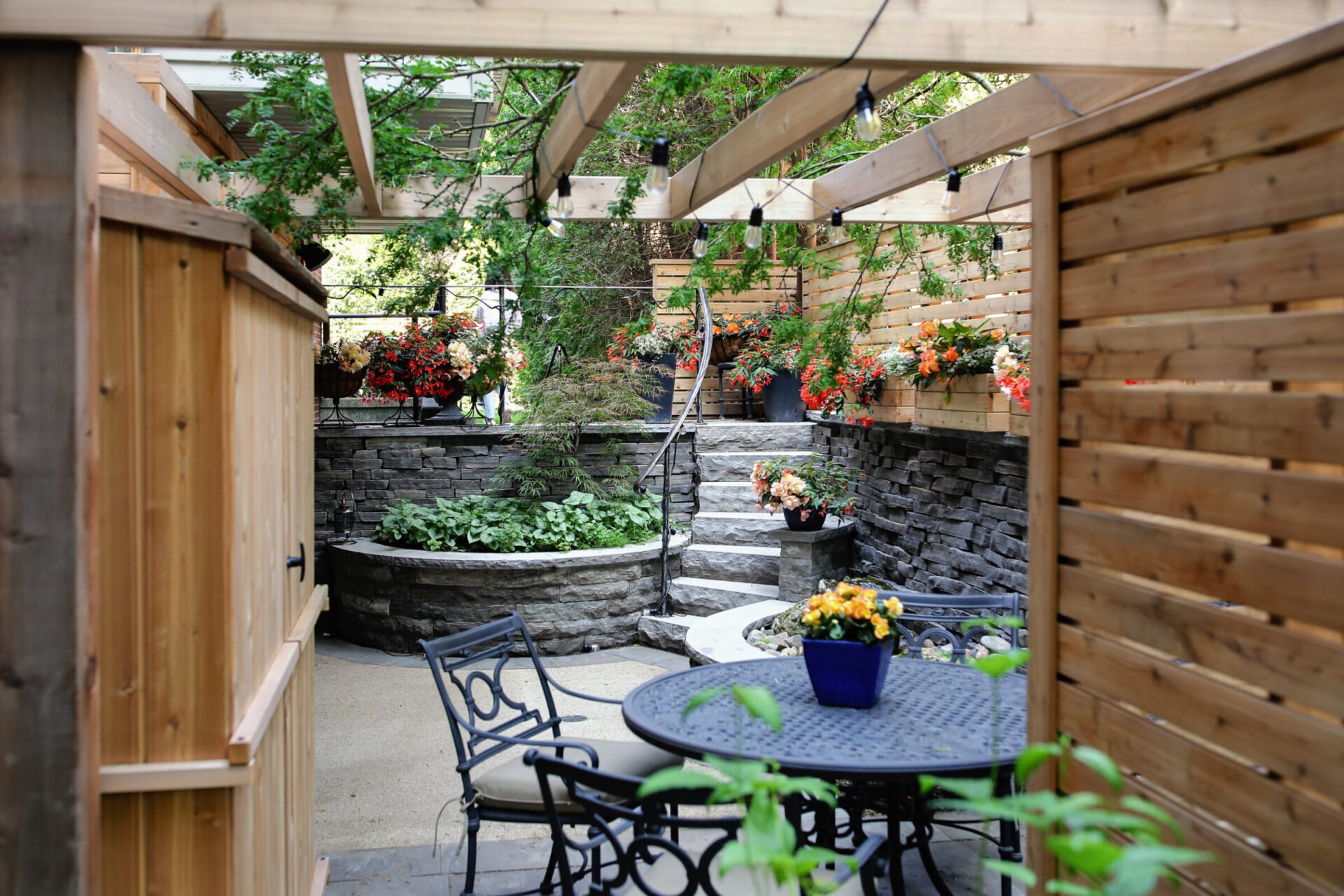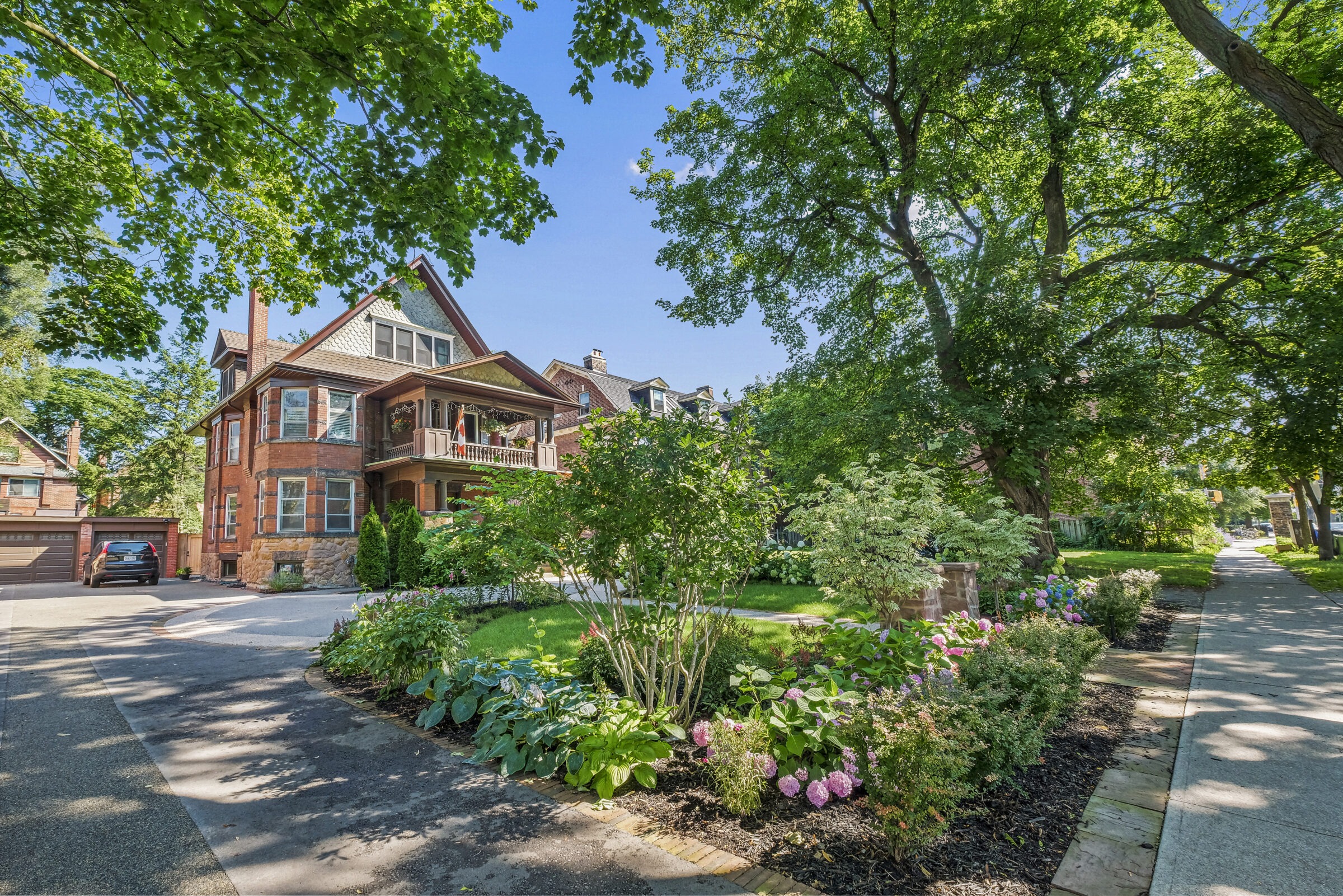Sustainable landscaping ideas for GTA homes offer a fantastic answer for homeowners who are increasingly turning to eco-friendly and sustainable landscaping practices. With growing concerns about climate change, water conservation, and biodiversity, landscaping is evolving into an important tool for environmental stewardship. Native plant landscaping in Toronto offers a variety of benefits, not only for homeowners but also for the environment. These plants are perfectly adapted to local conditions, making them a low-maintenance, water-efficient, and wildlife-friendly choice. As sustainability becomes a more prominent focus for the GTA, incorporating native plants into your landscape design can be a game-changer in creating an eco-friendly and aesthetically pleasing outdoor space.
We will explore the importance of native plants, how they benefit both your home and the environment, and provide practical, sustainable landscaping ideas for GTA homes that will help you design a beautiful, eco-conscious outdoor space.
What is Native Plant Landscaping?
Native plant landscaping in Toronto refers to the practice of using plants that are indigenous to the region, meaning they naturally grow in the area without the need for human intervention. These plants have evolved to thrive in the local climate, soil, and environmental conditions. Unlike non-native plants, which often require special care, fertilizers, or pest control, native plants are naturally adapted to survive on their own.
The key benefits of native plants in landscaping are numerous. Since they are well-suited to the local environment, native plants typically require less water, fewer fertilizers, and less maintenance than non-native species. This makes them an excellent choice for homeowners who want to reduce their environmental footprint and save on long-term maintenance costs.
In addition to being practical, native plants also help support local wildlife. Birds, insects, and pollinators, such as bees and butterflies, rely on native plants for food and shelter. By choosing native plants, you are not only beautifying your home but also contributing to the conservation of local ecosystems.
One of the main distinctions between native plants and non-native species is that non-native plants can sometimes become invasive, outcompeting native species and disrupting local ecosystems. Invasive plants often require more water, chemicals, and maintenance to keep them under control. By opting for native plants, you’re ensuring your garden is in harmony with the local environment, while also providing vital habitats for wildlife.
Why Sustainable Landscaping Matters for GTA Homeowners

Sustainable landscaping involves creating outdoor spaces that are environmentally responsible, resource-efficient, and aligned with long-term ecological health. For homeowners in the GTA, embracing sustainable landscaping ideas for GTA homes offers several key benefits:
1. Reduced Water Usage and Maintenance Costs
One of the most significant benefits of sustainable landscaping is the reduction in water consumption. Native plants are drought-tolerant, meaning they can thrive with less water, making them perfect for the GTA’s fluctuating weather patterns. By using plants that are naturally adapted to the region, you’ll save on your water bill and reduce the amount of water needed to keep your landscape looking healthy.
In addition to water savings, sustainable landscapes require less maintenance. Native plants are well-suited to local soils and conditions, which means they’re less likely to require frequent fertilizing, pest control, or intensive care. This reduces the time, effort, and money you spend maintaining your garden, allowing you to enjoy your outdoor space without constant upkeep.
2. Increased Property Value
Homes with well-designed, sustainable landscapes are often more attractive to potential buyers. Sustainable landscaping can enhance the curb appeal of your property, making it stand out in the market. A landscape that incorporates native plants, water-efficient systems, and eco-friendly features can significantly increase the resale value of your home. This is especially important in the GTA, where eco-conscious buyers are increasingly prioritizing sustainability.
3. Support for Local Ecosystems
By incorporating native plants into your garden, you’re contributing to the health of local ecosystems. Native plants provide food and habitat for wildlife, including pollinators such as bees and butterflies. This is especially important as urbanization in the GTA continues to encroach on natural habitats. A native plant garden can help support biodiversity and preserve the region’s natural beauty.
4. Lower Carbon Footprint
Sustainable landscaping practices help reduce your carbon footprint. By using native plants, which are adapted to the local climate, you can minimize the need for external resources like fertilizers, pesticides, and excessive watering. Additionally, reducing lawn areas (which require constant mowing) helps lower emissions from gas-powered equipment. Sustainable landscaping is a simple yet effective way to contribute to a greener future.
Incorporating sustainable landscaping ideas into your garden can improve the health of the environment while saving you money and time. It’s a win-win for both homeowners and the planet.
The Benefits of Incorporating Native Plants in Your Garden

Native plants offer numerous advantages for homeowners looking to create a more sustainable and eco-friendly outdoor space. Here’s why native plants should be at the heart of your landscaping design:
1. Water Conservation
One of the most significant benefits of native plants is their ability to conserve water. These plants are adapted to the local climate and have evolved to thrive on the natural rainfall in the GTA. Unlike non-native plants, which often require frequent watering, native plants need far less irrigation. This reduces your water usage and helps conserve this precious resource in your community.
2. Low Maintenance
Native plants are incredibly low-maintenance, making them a great choice for busy homeowners. Since they are well-suited to local conditions, they don’t require as much attention as non-native species. You’ll spend less time fertilizing, pruning, and fighting off pests. Native plants are naturally resistant to many local pests and diseases, further reducing the need for chemical interventions.
3. Biodiversity
Native plants support local wildlife, including pollinators, birds, and beneficial insects. Many of the plants we rely on for food and habitat have declined due to urbanization and the use of non-native plants. By incorporating native plants into your garden, you can help restore habitats and support pollinators and other wildlife. This contributes to the overall biodiversity of the region and helps preserve the local ecosystem.
4. Seasonal Interest
Native plants offer year-round beauty and interest in the garden. From the colourful blooms of spring and summer to the stunning foliage in fall, native plants provide a dynamic visual experience throughout the year. Many native plants also offer structure in winter, with grasses and shrubs providing texture and movement in your landscape.
5. Examples of Native Plants for the GTA
The GTA is home to various native plants that can enhance your landscape. Here are a few examples:
- Foamflower: A delicate groundcover with frothy white blooms, ideal for shaded or woodland gardens.
- Red-Twig Dogwood: Known for its striking red stems in winter, it’s perfect for wet areas.
- Black-Eyed Susan: A hardy wildflower that attracts pollinators and provides vibrant colour throughout the summer.
- Switchgrass: A native ornamental grass that adds texture and movement to the garden.
- Milkweed: A favourite of monarch butterflies, milkweed is an essential plant for any pollinator garden.
These plants not only beautify your space but also contribute to the health of local ecosystems.
Sustainable Landscaping Ideas for the GTA

Creating a sustainable landscape involves more than just choosing the right plants. It’s about designing a garden that works with nature and minimizes environmental impact. Here are some sustainable landscaping ideas for GTA homes:
1. Water Management Solutions for Native Plant Landscaping in Toronto
Water management is a key element of sustainable landscaping. One of the best ways to manage water efficiently is by incorporating rain gardens into your landscape. These gardens capture and filter stormwater, reducing runoff and helping to prevent flooding. Rain gardens are designed to hold water temporarily and allow it to slowly soak into the ground, improving water quality and reducing the strain on stormwater systems.
Another solution is permeable pavers for driveways and pathways. These pavers allow water to filter through, reducing runoff and promoting natural water flow. Swales and bio-retention basins are also effective at managing water, especially in areas prone to flooding or with poor drainage.
2. Soil Health
Healthy soil is the foundation of a successful garden. Using compost and organic mulch helps improve soil structure and enrich the earth with nutrients. Native plants are particularly beneficial for soil health because their deep roots help aerate the soil and improve its drainage. By reducing the need for chemical fertilizers, you’re not only creating a healthier garden but also protecting the surrounding environment from harmful runoff.
3. Xeriscaping
Xeriscaping is a landscaping technique that uses drought-tolerant plants to create a low-water, low-maintenance garden. By incorporating native drought-resistant plants, such as lavender, sedum, and ornamental grasses, you can reduce your water consumption while still enjoying a beautiful, vibrant garden.
4. Energy Efficiency
Trees and shrubs can be strategically placed to reduce heating and cooling costs in your home. By planting shade trees (like oaks and maples) on the south and west sides of your home, you can provide natural cooling during the hot summer months. In the winter, evergreen trees can act as windbreaks, reducing heating costs.
How to Get Started with Native Plant Landscaping in the GTA

If you’re ready to incorporate native plants into your garden, here are a few simple steps to help you get started:
1. Choose the Right Plants
The first step is to consider the specific conditions of your garden. Think about factors like sunlight, soil type, and moisture levels. For example, wild lupine is ideal for well-drained soils, while red-twig dogwood thrives in wet areas. Research the native plants that will thrive in your garden’s conditions and create a planting plan accordingly.
2. Design with Layering in Mind
Native plant landscaping is most effective when you incorporate a variety of plants at different levels. Layering with trees, shrubs, and groundcovers creates a visually interesting and diverse landscape. Consider adding paths, seating areas, or functional zones to create a dynamic garden space that’s both beautiful and practical.
3. Consult a Professional
While you can design a native plant garden on your own, working with a professional landscape designer can help you maximize your space’s potential. A professional can help you select the right plants, design a layout that suits your needs, and ensure that your garden thrives in the long term.
Native Plant Landscaping in Toronto and More
Incorporating native plant landscaping in Toronto is an essential step towards creating a sustainable, eco-friendly outdoor space that benefits both homeowners and the environment. Native plants conserve water, reduce maintenance, support local wildlife, and offer year-round beauty. By embracing sustainable landscaping ideas in the GTA, you can create a garden that is both beautiful and environmentally responsible.
If you’re ready to transform your garden with native plants and sustainable landscaping practices, Infinite Possibilities is here to help. Our team of experienced designers can work with you to create a custom landscape that aligns with your sustainability goals while enhancing the beauty and functionality of your outdoor space.
Contact us today and book a consultation and let’s bring your vision for a sustainable garden to life.

